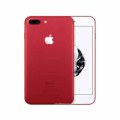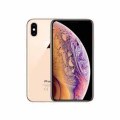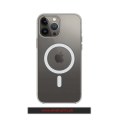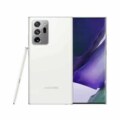- Whatisprice
- What is Today Mobile Price in Pakistan
- Mobiles
- Apple iPhone 14 Pro Max 1TB
Apple iPhone 14 Pro Max 1TB Price & Specifications
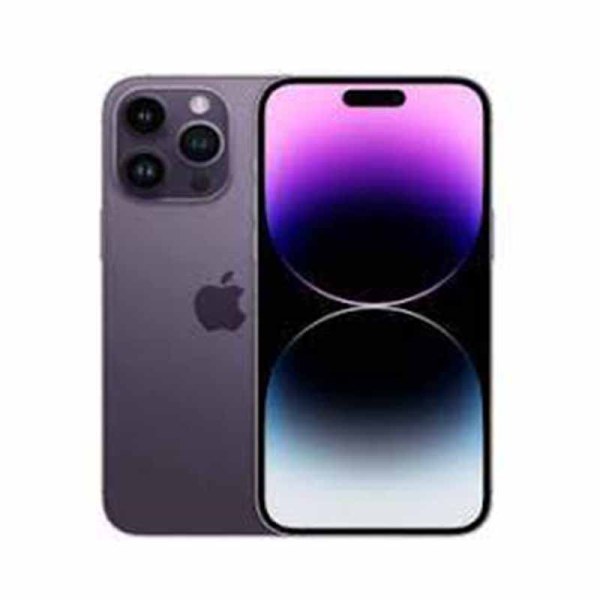


Apple iPhone 14 Pro Max 1TB Specs & All Features
General
| Device Type | Apple smartphone |
| Model | A2894, A2651, A2893, A2895, iphone15,3 |
| Announced | Feb 28, 2022 |
| Released | 2022, September 16 |
| Status | Available |
| Price | 529999 |
Design
| Type <strong>Design Type</strong> called form factor refers to a mobile phone's size, shape, and style as well as the layout and position of major components of phone. There are three major form factors seen in mobile phones => bar phones, folding phones and sliding phones. | Bar |
| Dimensions | 160.7 x 77.6 x 7.9 mm (6.33 x 3.06 x 0.31 in) |
| Weight | 240 g (8.47 oz) |
| Protection | Ceramic Shield glass, Always-On display, Glass front (Corning-made glass), glass back (Corning-made glass), stainless steel frame |
| Colors | Space Black, Silver, Gold, Deep Purple |
Network
| 2G Network |
GSM 850 / 900 / 1800 / 1900 - SIM 1 &amp;amp;amp; SIM 2 (dual-SIM) CDMA 800 / 1900 |
| 3G Network |
HSDPA 850 / 900 / 1700(AWS) / 1900 / 2100 CDMA2000 1xEV-DO |
| 4G Network |
1, 2, 3, 4, 5, 7, 8, 12, 13, 17, 18, 19, 20, 25, 26, 28, 30, 32, 34, 38, 39, 40, 41, 42, 46, 48, 66 - A2894, A2896 1, 2, 3, 4, 5, 7, 8, 11, 12, 13, 14, 17, 18, 19, 20, 21, 25, 26, 28, 29, 30, 32, 34, 38, 39, 40, 41, 42, 46, 48, 53, 66, 71 - A2651, A2893 1, 2, 3, 4, 5, 7, 8, 12, 13, 17, 18, 19, 20, 25, 26, 28, 30, 32, 34, 38, 39, 40, 41, 42, 46, 48, 66 - A2895 |
| 5G Network 5G Network | 1, 2, 3, 5, 7, 8, 12, 20, 25, 26, 28, 30, 38, 40, 41, 48, 66, 70, 77, 78, 79 SA/NSA/Sub6 - A2894, A2896 1, 2, 3, 5, 7, 8, 12, 14, 20, 25, 26, 28, 29, 30, 38, 40, 41, 48, 53, 66, 70, 71, 77, 78, 79, 258, 260, 261 SA/NSA/Sub6/mmWave - A2651 1, 2, 3, 5, 7, 8, 12, 14, 20, 25, 26, 28, 29, 30, 38, 40, 41, 48, 53, 66, 70, 71, 77, 78, 79 SA/NSA/Sub6 - A2893 1, 2, 3, 5, 7, 8, 12, 20, 25, 26, 28, 30, 38, 40, 41, 48, 66, 70, 77, 78, 79 SA/NSA/Sub6 - A2895 |
| SIM <strong>SIM</strong> (Subscriber Identity Module) is a small card that contains mobile network subscriber's account information. This allows the phone using the card to attach to a mobile network. The SIM card is most commonly associated with GSM and UMTS mobile networks. Moving a SIM card from one phone to another allows a subscriber to switch mobile phones without having to contact their mobile network carrier. SIM cards can also be used by a phone to store limited amounts of data, such as phone numbers and text messages. | Nano SIM |
| Dual SIM | Nano-SIM and eSIM - International Dual eSIM with multiple numbers - USA Dual SIM (Nano-SIM, dual stand-by) - China IP68 dust/water resistant (up to 6m for 30 mins) Apple Pay (Visa, MasterCard, AMEX certified) |
Display
| Display Type <strong>Display Technology => </strong> A number of display technologies and types used in mobile phones => TFT (Thin Film Transistor), IPS (In-Place Switching), OLED (Organic Light Emitting Diode), AMOLED (Active-Matrix Organic Light-Emitting Diode), Super AMOLED (an even advanced version of AMOLED), Resistive Touchscreen (Resistive touchscreens contain two layer of conductive material with a very small gap between them which acts as a resistance), Capacitive Touchsceen (Capacitive touchscreen technology consists of a layer of glass coated with a transparent conductor) | LTPO Super Retina XDR OLED, 120Hz, HDR10, Dolby Vision, 1000 nits (typ), 2000 nits (HBM) |
| Size | 6.7 inches, 110.2 cm2 (~88.3% screen-to-body ratio) |
| Resolution | 1290 x 2796 pixels, 19.5:9 ratio |
| Display Colors <strong>Display Colors</strong> is refers to the number of different shades of colors that the screen is capable of displaying => 64K colors, 256K colors and 16 million colors, Obviously 16M is highest available range of colors and better than others. | 1 Billion colors |
| Pixel Density <strong>Pixel Density (PPI)</strong> is refers to the concentration of pixels on a particular display, measured in pixels per inch (ppi). Pixel density is calculated by dividing the diagonal pixel resolution of a display by its diagonal size, higher pixel density better display quality. | ~460 ppi density |
| Touch Screen | Yes multi touch |
| Display Protection <strong>Display Protection => </strong> Gorilla Glass is a special alkali-aluminosilicate glass shield with exceptional damage resistance that helps protect mobile displays from scratches, drops, and bumps of everyday use, It is always better to go for a smartphone with Gorilla Glass for that added protection and peace of mind. | Ceramic Shield glass, Always-On display, Glass front (Corning-made glass), glass back (Corning-made glass), stainless steel frame |
| Features | LTPO Super Retina XDR OLED, 120Hz, HDR10, Dolby Vision, 1000 nits (typ), 2000 nits (HBM) |
| Secondary Display | - |
Media
| Audio Playback | Yes, with stereo speakers |
| Video Playback | Yes, 4K@24/25/30/60fps, 1080p@25/30/60/120/240fps, 10-bit HDR, Dolby Vision HDR (up to 60fps), ProRes, Cinematic mode (4K@24/30fps), stereo sound rec. |
| Video Out | Yes |
| FM Radio | No |
| Alert Types | All |
| Ring Tones | Build-in |
| Loudspeaker | Yes, with stereo speakers |
| Handsfree | No |
Camera
| Main Camera | Triple Camera setup: 48 MP, f/1.8, 24mm (wide), 1/1.28", 1.22µm, dual pixel PDAF, sensor-shift OIS 12 MP, f/2.8, 77mm (telephoto), 1/3.5", PDAF, OIS, 3x optical zoom 12 MP, f/2.2, 13mm, 120˚ (ultrawide), 1/2.55", 1.4µm, dual pixel PDAF TOF 3D LiDAR scanner (depth) |
| Image | Dual-LED dual-tone flash, HDR (photo/panorama) |
| Video | 4K@24/25/30/60fps, 1080p@25/30/60/120/240fps, 10-bit HDR, Dolby Vision HDR (up to 60fps), ProRes, Cinematic mode (4K@24/30fps), stereo sound rec. |
| Camera Features | Dual-LED dual-tone flash, HDR (photo/panorama), 4K@24/25/30/60fps, 1080p@25/30/60/120/240fps, 10-bit HDR, Dolby Vision HDR (up to 60fps), ProRes, Cinematic mode (4K@24/30fps), stereo sound rec. |
| Flash <strong>Flash Light => </strong> There is commonly two types of flash lights are used in camera mobile phones, LED Flash (LED flash offers lower power consumption with drive circuitry that takes up very little room, LEDs can be strobed faster than any other light source), Xenon Flash (xenon flash produces an extremely intense full-spectrum white light for a very short duration) | Dual-LED dual-tone flash |
| Front Camera Front Camera | 12 MP, f/1.9, 23mm (wide), 1/3.6", PDAF, OIS (unconfirmed) SL 3D, (depth/biometrics sensor), Features: HDR, Cinematic mode (4K@24/30fps), Video: 4K@24/25/30/60fps, 1080p@25/30/60/120fps, gyro-EIS |
Software
| Operating System <strong>OS => </strong> Every computer system run on a base software called Operating System (OS). Operating System controls all basic operations of the computer (such as smartphone, PDAs, tablet computers and other handheld devices). The Operating System allows the user to install and run third party applications (apps), apps are used to add new functionality to the device. | iOS 16, upgradable to iOS 16.1 |
Hardware
| Chipset <strong>Chipset</strong> is a group of integrated circuits designed to perform one or a more dedicated functions, often with real time computing constraints, Popular smartphones are equipped with more advanced embedded chipsets that can do many different tasks depending on their programming. | Apple A16 Bionic (4 nm) |
| CPU <strong>CPU</strong> (Central Processing Unit) mostly known as processors, CPU processes instructions in order to carry out certain functions that make your device operate properly. Processors are often described as the brain of computers, smartphones and tablets, Smartphones and tablets rely on processors to carry out their every task, Processors are an incredibly important factor in selecting any type of computing device, including your smartphone. | Hexa-core (2x3.46 GHz Everest + 4x2.02 GHz Sawtooth) |
| GPU <strong>GPU</strong> (Graphics Processing Unit) is a single-chip processor designed to rapidly manipulate and alter memory to accelerate the creation of images in a frame buffer intended for output to a display, This includes things such as lighting effects, object transformations, and 3D motion. | Apple GPU (5-core graphics) |
| RAM (Memory) | 6 GB RAM |
| Internal Storage <strong>Internal Storage</strong> is a data storage space (flash memory) mostly used in smartphones, tablets and other electronic devices where operating system, apps, music, photos, videos, files and other user data Is stored. | 128GB / 256GB / 512GB / 1TB build-in |
| Card Slot <strong>Memory Card Slot</strong> is a special slot for inserting a memory card. Memory cards allow you to expand the phone's built-in memory, A memory card (sometimes called a flash memory card or a storage card) is a small storage medium used to store data such as text, pictures, audio, and video, for use on small, portable or remote computing devices such as mobile phones, mp3 players, digital cameras. | No |
| Sensors <strong>Sensors</strong> are electronic components that detects and responds to some type of input from the physical environment. The specific input could be light, heat, motion, moisture, pressure and location, The output is generally a signal that is converted to use in computing systems, a location sensor, such as a GPS receiver is able to detect current location of your electronic device. |
Face ID, accelerometer, gyro, proximity, compass, barometer Ultra Wideband (UWB) support Emergency SOS via satellite (SMS sending/receiving) |
Connectivity
| Bluetooth <strong>Bluetooth</strong> is a wireless communications technology for exchanging data between mobile phones, headsets, computers and other network devices over short distances without wires, Bluetooth technology was primarily designed to support simple wireless networking of personal consumer devices. | 5.3, A2DP, LE |
| Wi-fi <strong>Wi-Fi</strong> is a popular wireless networking technology using radio waves to provide high-speed network connections that allows devices to communicate without cords or cables, Wi-Fi is increasingly becoming the preferred mode of internet connectivity all over the world. | Wi-Fi 802.11 a/b/g/n/ac/6, dual-band, hotspot |
| Wi-fi Hotspot | Yes |
| USB | Lightning, USB 2.0 |
| GPS <strong>GPS</strong> The Global Positioning System is a satellite-based radio navigation system, GPS permits users to determine their position, velocity and the time 24 hours a day, in all weather, anywhere in the world, In order to locate your position, your device or GPS receiver must have a clear view of the sky. | GPS (L1+L5), GLONASS, GALILEO, BDS, QZSS |
| NFC <strong>NFC</strong> (Near field communication) is a set of standards for smartphones and similar devices to establish peer-to-peer radio communications with each other by touching them together or bringing them into proximity, usually no more than a few inches. | Yes |
Data
Battery
| Battery Type <strong>Battery Type => </strong> Cell phones run on various kinds of batteries depending on the manufacturer, phone size or shape and features. There are basically four types of cell phone batteries => Lithium Polymer, Lithium Ion, Nickel Metal Hydride and Nickel Cadmium. | Li-Ion (Lithium Ion) |
| Capacity <strong>Battery Capacity</strong> is a measure (typically in Amp-hr) of the charge stored by the battery, and is determined by the mass of active material contained in the battery. The battery capacity represents the maximum amount of energy that can be extracted from the battery under certain conditions. | Li-Ion 4323 mAh, non-removable (16.68 Wh) Charging Wired, PD2.0, 50% in 30 min (advertised) |
The Apple iPhone 14 Pro Max 1TB is the latest offering from Apple, packed with powerful features designed to impress. Let’s dive into what makes this phone stand out.
Apple iPhone 14 Pro Max 1TB Power Specs:
The iPhone 14 Pro Max runs on iOS 16 and boasts a sleek design with dimensions of 160.7 x 77.6 x 7.9 mm, weighing 240 grams. It supports dual SIM (Nano-SIM) and comes in colors like Space Black, Silver, Gold, and Deep Purple.
Apple iPhone 14 Pro Max 1TB Display and Performance:
The phone features a stunning LTPO Super Retina XDR OLED display spanning 6.7 inches. With a resolution of 1290 x 2796 pixels and a pixel density of about 460 PPI, every detail on this screen is crisp and clear. The display supports HDR10, Dolby Vision, and offers a 120Hz refresh rate for smooth scrolling and gaming.
Under the hood, the iPhone 14 Pro Max is powered by the Apple A16 Bionic chipset, coupled with a Hexa-core CPU that includes high-performance cores for seamless multitasking and gaming. The 6GB RAM ensures smooth performance even with intensive apps and games.
Apple iPhone 14 Pro Max 1TB Camera Capabilities:
One of the standout features is its impressive quad-camera setup on the rear. It includes a 48 MP wide-angle lens, a 12 MP telephoto lens with 3x optical zoom, a 12 MP ultrawide lens, and a TOF 3D LiDAR scanner for enhanced depth sensing. This setup supports 4K video recording at various frame rates with advanced HDR capabilities.
On the front, there are dual 12 MP cameras capable of capturing stunning selfies and supporting 4K video recording with features like HDR and cinematic mode.
Apple iPhone 14 Pro Max 1TB Storage and Battery:
The iPhone 14 Pro Max 1TB variant offers ample storage for all your apps, photos, and videos. It comes with 1TB of internal storage and supports fast charging, allowing you to charge up to 50% in just 30 minutes. Additionally, it supports MagSafe wireless charging and Qi magnetic fast wireless charging.
Apple iPhone 14 Pro Max 1TB Connectivity and Additional Features:
Connectivity options include Wi-Fi 6, Bluetooth 5.3, GPS with dual-band A-GPS, and NFC for Apple Pay. The phone is equipped with various sensors like accelerometer, barometer, and gyro, along with Face ID for secure unlocking.
Apple iPhone 14 Pro Max 1TB Price in Pakistan:
In Pakistan, the Apple iPhone 14 Pro Max 1TB is priced at Rs 565,999, making it a premium choice for those looking for top-notch performance and features. The phone has received an average rating of 4.5 stars based on user reviews, highlighting its popularity and satisfaction among users.
In conclusion, the iPhone 14 Pro Max 1TB combines powerful performance, impressive camera capabilities, and a stunning display, making it a flagship contender in the smartphone market. Whether you’re a tech enthusiast or a casual user, this phone promises to deliver an exceptional experience.
This article aimed to provide a simple overview of the iPhone 14 Pro Max 1TB’s features without technical jargon, ensuring it’s accessible to readers in Pakistan and India

